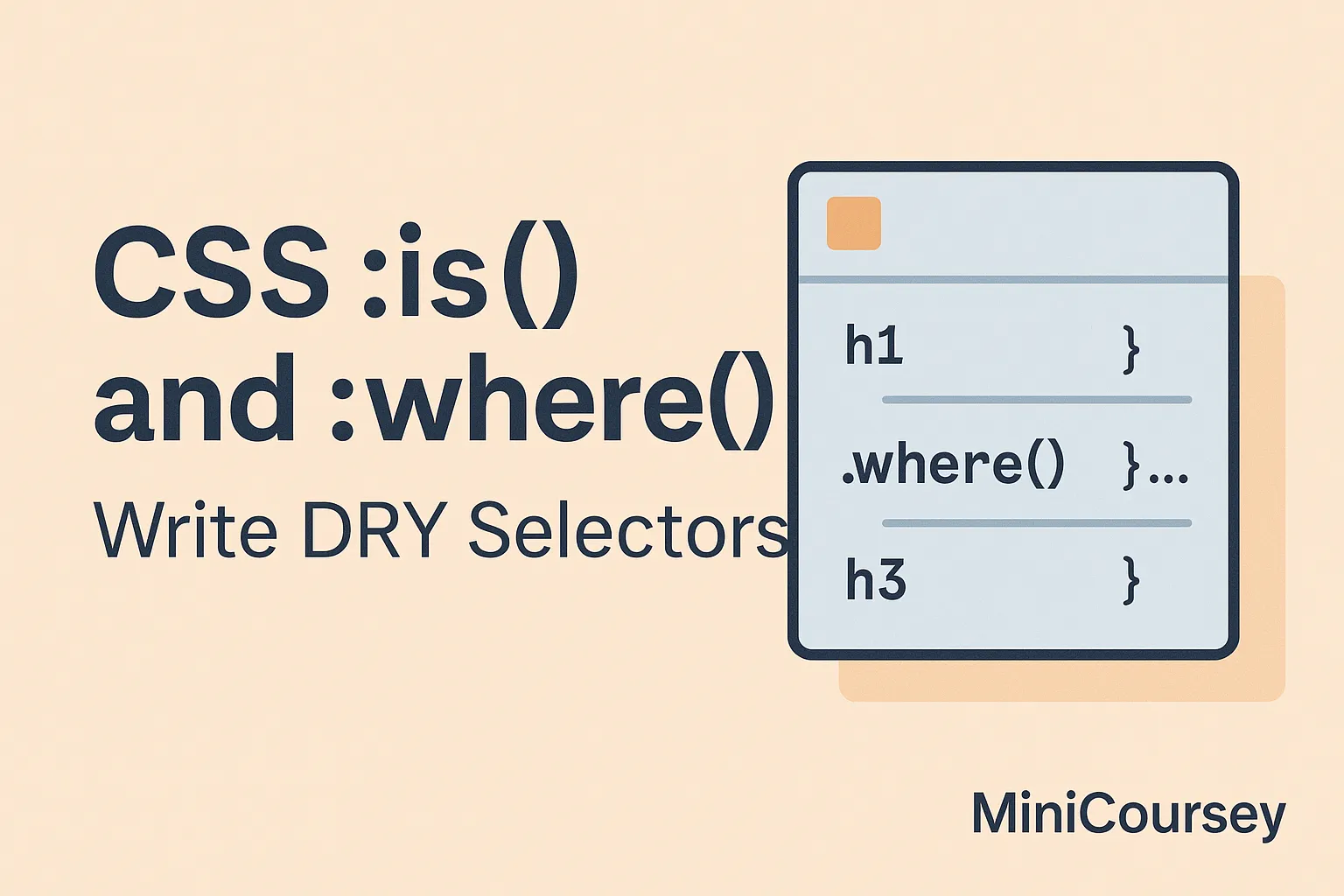Ever get tired of repeating long selectors just to apply the same styles to multiple elements? The new :is() and :where() pseudo-classes solve this problem beautifully! They let you group selectors together in a single, clean rule — making your CSS shorter, more maintainable, and easier to read. In this MiniCoursey quick guide, you’ll learn how :is() and :where() work, their key differences, and how to use them to write DRY, modern CSS.
What is :is()?
:is() allows you to group multiple selectors and apply styles to any element that matches. It keeps your rules concise and clear, especially for complex hierarchies.
:is(h1, h2, h3) {
margin-bottom: 1rem;
}
This rule targets all h1, h2, and h3 headings with a single selector.
What is :where()?
:where() works just like :is() but always has zero specificity. This means it won’t accidentally override other styles, making it perfect for resets and base styles.
:where(ul, ol) {
padding-left: 1.5rem;
}
Here, both ul and ol lists get consistent padding without adding extra weight to your selectors.
Key Differences
:is()— keeps normal specificity based on the most specific selector inside.:where()— always zero specificity.
💡 Pro Tip: Use
:where()for resets and base layers, and:is()for practical grouping where specificity matters.
⚠️ Common Mistake: Don’t forget browser support — these pseudo-classes are modern but well-supported in current browsers.
FAQ
Q: Can I nest pseudo-classes inside?
A: Yes! Combine them with :hover, :focus, or any valid selector.
Q: Do they replace pre-processors?
A: Not entirely — but they remove the need for some repetitive nesting or mixins.
Related Link
👉 Check out previous: CSS Aspect-Ratio vs Container Queries — When to Use Each
Where to Learn More
Check out MDN’s docs on :is() and :where() for more advanced patterns and examples.
Conclusion
Congrats — you now know how to write DRY selectors with :is() and :where()! Keep your CSS clean, short, and future-friendly.
✨ Bookmark MiniCoursey for more quick & free mini courses!

